Hong Kong is a vibrant and bustling metropolis known for its iconic skyline, deep natural harbor, and significant cultural and economic influence. Situated on the southern coast of China, it is a Special Administrative Region (SAR) with a high degree of autonomy under the “one country, two systems” principle. With a population of over 7 million people, Hong Kong is one of the most densely populated places in the world. The city is a melting pot of Eastern and Western cultures, reflected in its architecture, cuisine, and daily life.
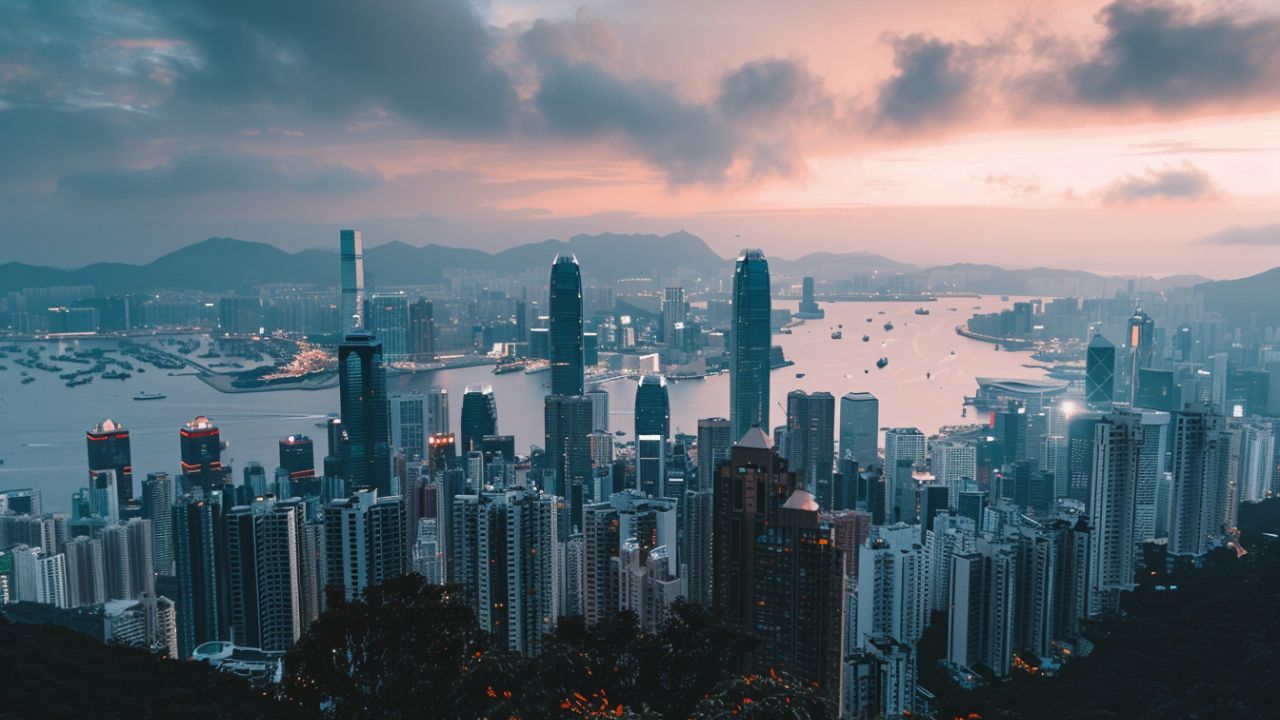
Hong Kong is a city where East meets West, blending vibrant traditions with cutting-edge modernity in a skyline that never sleeps.
Victoria Peak (The Peak)
Victoria Peak, commonly referred to as The Peak, is the highest point on Hong Kong Island, standing at 552 meters (1,811 feet) above sea level. It is one of Hong Kong’s most popular tourist destinations, offering stunning panoramic views of the city, Victoria Harbour, and the surrounding islands. The Peak is accessible by the historic Peak Tram, which has been operating since 1888, making the journey to the top an experience in itself. The area is also known for its lush greenery, tranquil walking trails, and vibrant attractions.
Elevation: 552 meters (1,811 feet)
Location: Hong Kong Island
Peak Tram: Operating since 1888, it is one of the world’s oldest funicular railways.
The Peak Tower: A major landmark at the summit, housing various attractions, shops, and restaurants.
Sky Terrace 428: The highest viewing platform in Hong Kong, located at The Peak Tower, offering 360-degree views.
Population: The Peak is also a prestigious residential area, home to some of Hong Kong’s wealthiest residents.
What to See at Victoria Peak
Sky Terrace 428: This viewing platform at The Peak Tower provides breathtaking 360-degree views of the Hong Kong skyline, Victoria Harbour, and the South China Sea.
The Peak Tower: An architectural icon, housing various attractions including Madame Tussauds Hong Kong, restaurants, and shops.
Peak Galleria: A shopping and dining complex offering a range of local and international brands, as well as another observation deck.
Lugard Road Lookout: A popular spot along the walking trail that offers spectacular views, especially at sunset.
The Peak Garden: A serene park with beautifully manicured gardens and walking paths.
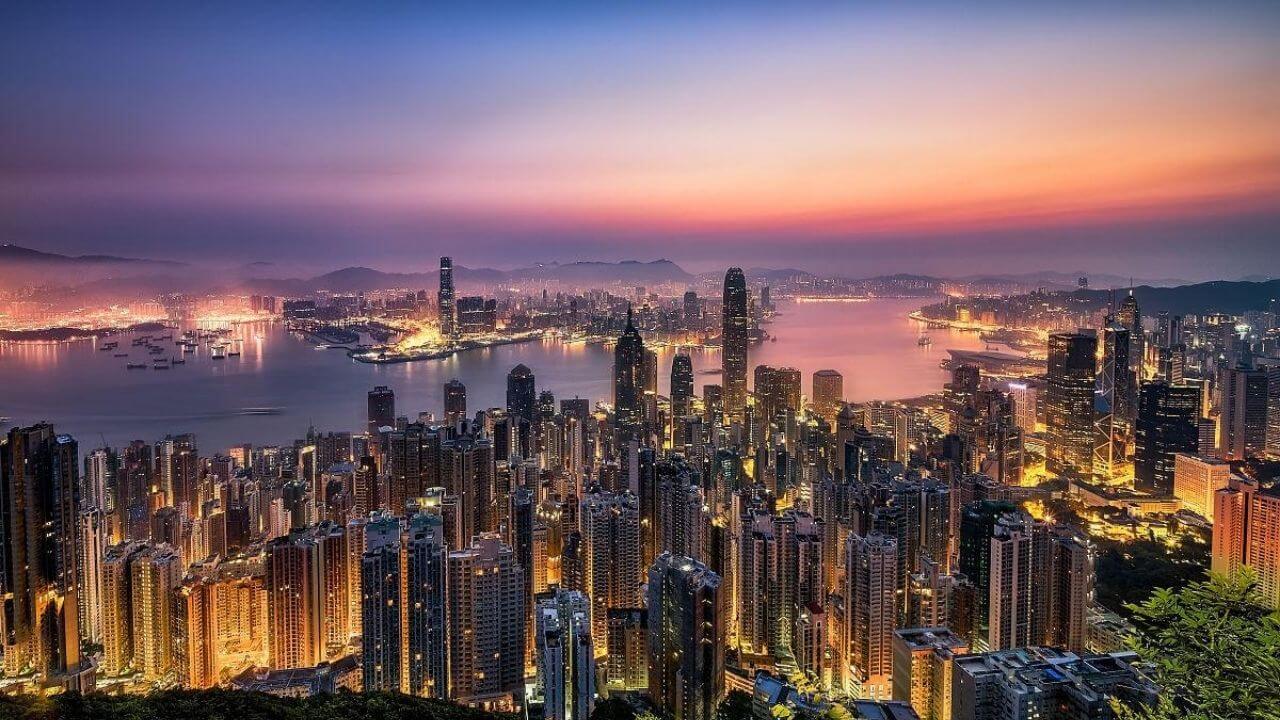
What to Do at Victoria Peak
Ride the Peak Tram: Experience the historic funicular railway that takes you to the summit with stunning views along the way.
Enjoy the Views: Spend time at the various observation decks to take in the breathtaking views of the city and harbor.
Visit Madame Tussauds Hong Kong: Explore lifelike wax figures of celebrities, historical figures, and cultural icons.
Explore Walking Trails: Take a leisurely stroll along trails like the Peak Circle Walk, Harlech Road, and Lugard Road to enjoy the natural beauty and panoramic views.
Dine with a View: Enjoy a meal at one of the many restaurants and cafes offering spectacular views of the city.
Shopping: Browse through the shops at The Peak Tower and Peak Galleria for souvenirs, clothing, and other goods.
Tips for Visiting Victoria Peak
Best Time to Visit: Visit early in the morning or late in the afternoon to avoid the crowds and enjoy cooler temperatures. Sunset is an especially beautiful time to capture stunning views.
Weather: Check the weather forecast before you go. Clear days provide the best visibility for enjoying the views.
Peak Tram: The Peak Tram can get very busy, especially during peak tourist seasons. Consider going early or late in the day to avoid long lines. Alternatively, take a bus or taxi if the wait is too long.
Walking Shoes: Wear comfortable shoes if you plan to explore the walking trails.
Photography: Bring a good camera or smartphone to capture the incredible views, especially from Sky Terrace 428 and Lugard Road Lookout.
Stay Hydrated: Bring water, especially if you plan to walk the trails.
Public Transport: Use the MTR to Central Station and then take bus number 15 or 15C to The Peak if you prefer not to wait for the tram.
Tsim Sha Tsui Promenade
Tsim Sha Tsui Promenade is a bustling waterfront area stretching along Victoria Harbour, this promenade offers stunning views of the iconic Hong Kong skyline and is a popular spot for both locals and tourists. The promenade is home to several major attractions, including the Avenue of Stars, the Hong Kong Cultural Centre, and the Clock Tower.
Length: Approximately 1.6 kilometers
Location: Tsim Sha Tsui, Kowloon, along Victoria Harbour
Key Landmarks: Avenue of Stars, Hong Kong Cultural Centre, Clock Tower, and the Hong Kong Space Museum
Activities: Walking, sightseeing, photography, and enjoying street performances
Why visit
- Stunning Views: Panoramic views of the Hong Kong Island skyline, especially breathtaking during sunset and the Symphony of Lights show.
- Cultural Attractions: Visit the Avenue of Stars, which celebrates Hong Kong’s film industry with statues and handprints of famous actors.
- Leisurely Strolls: Enjoy a relaxing walk along the promenade, taking in the sights and sounds of the harbor.
- Street Performers: Experience various street performances and local artists along the promenade.
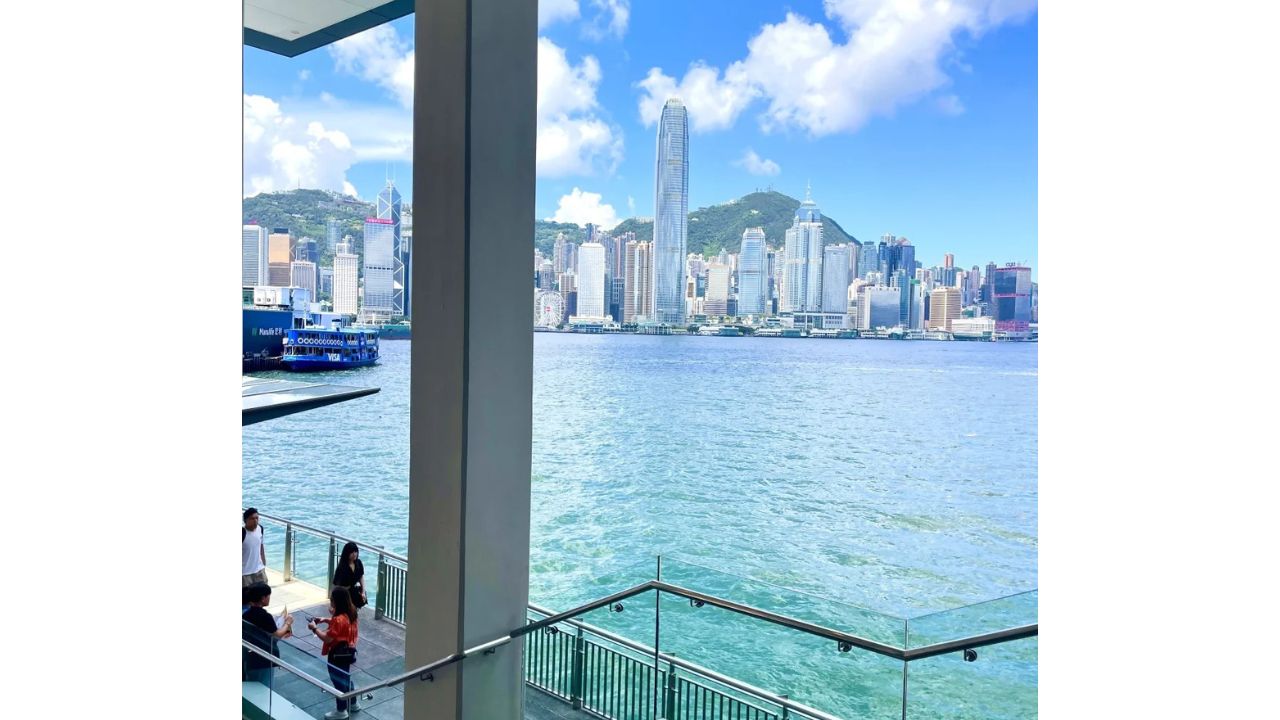
Major Attractions at Tsim Sha Tsui Promenade
Avenue of Stars
The Avenue of Stars is Hong Kong’s tribute to its thriving film industry, akin to Hollywood’s Walk of Fame. Here, tourists can find statues, plaques, and handprints of famous Hong Kong movie stars such as Bruce Lee and Jackie Chan. The promenade offers interactive exhibits and stunning views of Victoria Harbour.
Hong Kong Cultural Centre
The Hong Kong Cultural Centre is a premier venue for performing arts in the city. It hosts a wide range of cultural performances, including opera, ballet, symphony concerts, and theater. The architectural design is striking, and the center often has free exhibitions and events in its public spaces.
Clock Tower
The Clock Tower is an iconic historical landmark, standing at 44 meters tall. It is a remnant of the original Kowloon-Canton Railway Station, symbolizing the city’s rich colonial history. Visitors often take photos here while enjoying the surrounding scenic views of the harbor.
Tips for Visiting Tsim Sha Tsui Promenade
Best Time to Visit: Visit in the evening to catch the Symphony of Lights show at 8 PM.
Comfortable Footwear: Wear comfortable shoes for walking along the promenade.
Photography: Bring a camera to capture the stunning views of the skyline and harbor.
Stay Hydrated: Carry water, especially on hot days.
Dining Options: Explore nearby dining options in Tsim Sha Tsui for a variety of cuisines after your walk.
Ngong Ping 360 and Tian Tan Buddha (Big Buddha)
Ngong Ping 360 is a scenic cable car experience on Lantau Island, Hong Kong, that offers breathtaking views of the surrounding landscapes. The cable car journey leads to Ngong Ping Village, home to the Tian Tan Buddha, also known as the Big Buddha. This massive bronze statue is one of the largest seated Buddha statues in the world and a major cultural and spiritual landmark.
Ngong Ping 360: A 5.7-kilometer cable car ride that takes approximately 25 minutes.
Tian Tan Buddha: Stands at 34 meters (112 feet) tall and weighs 250 metric tons.
Location: Lantau Island, Hong Kong.
Ngong Ping Village: Features cultural attractions, shops, and restaurants.
What to See and do
- Cable Car Ride: Enjoy panoramic views of Lantau Island, the South China Sea, and the Hong Kong International Airport.
- Tian Tan Buddha: Climb 268 steps to reach the statue and take in the magnificent views and serene atmosphere.
- Po Lin Monastery: Adjacent to the Big Buddha, it is a significant Buddhist monastery with beautiful architecture and gardens.
- Ngong Ping Village: Explore themed attractions, cultural performances, and a variety of dining and shopping options.
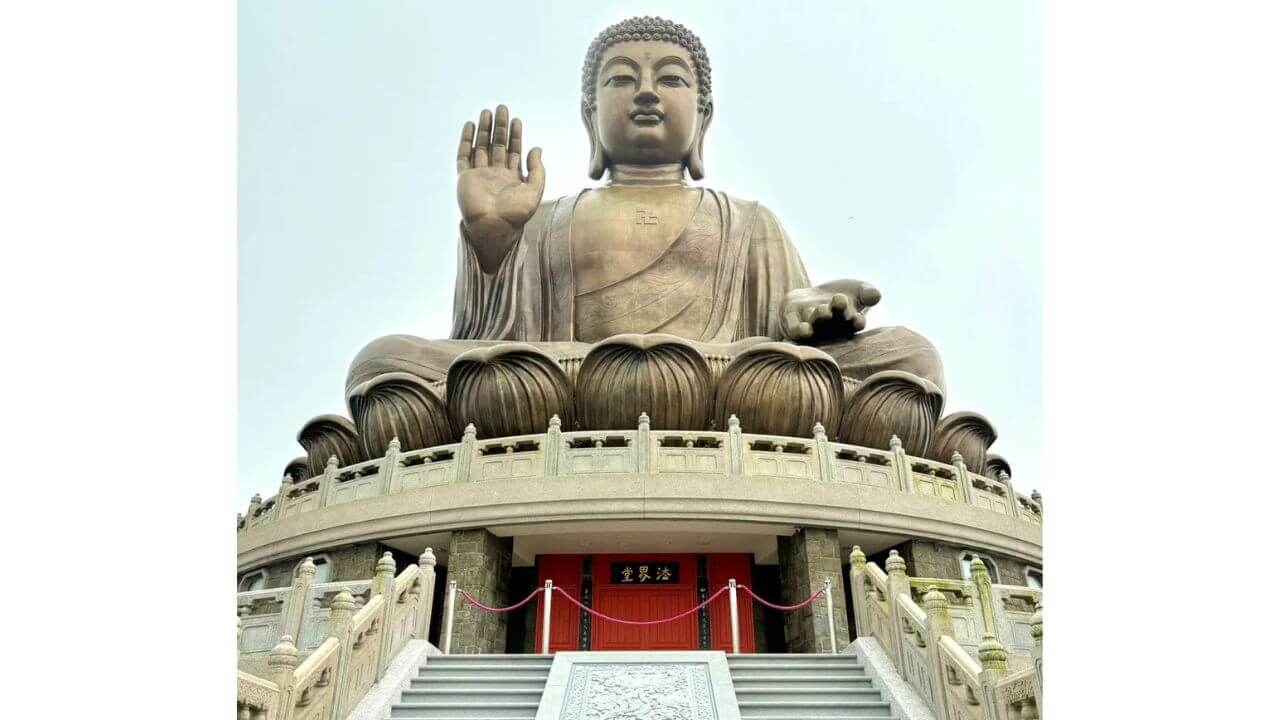
Tips for Visiting
Best Time to Visit: Early morning or late afternoon to avoid peak crowds and enjoy cooler temperatures.
Weather Check: Ensure good weather for clear views and a pleasant cable car ride.
Comfortable Shoes: Wear comfortable footwear for climbing the steps to the Big Buddha and exploring the village.
Tickets: Purchase tickets online in advance to save time and secure a spot.
Stay Hydrated: Bring water, especially during the summer months.
Ocean Park
Ocean Park is a major marine-themed amusement park located on the southern side of Hong Kong Island. Opened in 1977, it is one of Hong Kong’s most popular attractions, combining thrilling rides, animal exhibits, and educational experiences. The park is divided into two main areas: the Waterfront and the Summit, connected by a scenic cable car and the Ocean Express funicular railway.
Opening Year: 1977
Location: Wong Chuk Hang and Nam Long Shan, Hong Kong Island
Size: Approximately 91.5 hectares
Annual Visitors: Over 7 million
Divisions: Waterfront and Summit areas, connected by cable car and funicular railway
What to See
Marine Life Exhibits: The Grand Aquarium, home to over 5,000 fish and marine creatures from 400 species, and the Amazing Asian Animals exhibit, featuring giant pandas, red pandas, and other unique animals.
Thrilling Rides: Exciting rides such as the Hair Raiser roller coaster, the Abyss Turbo Drop, and the Arctic Blast.
Animal Shows: Entertaining and educational shows like “Ocean Wonders” and “Sea Lion Fun Time Show.”
Aqua City: A vibrant waterfront area with the Grand Aquarium, Ocean Theatre, and various dining and shopping options.
Rainforest and Polar Adventure: Zones offering close encounters with exotic animals and immersive environments replicating the Amazon rainforest and polar regions.
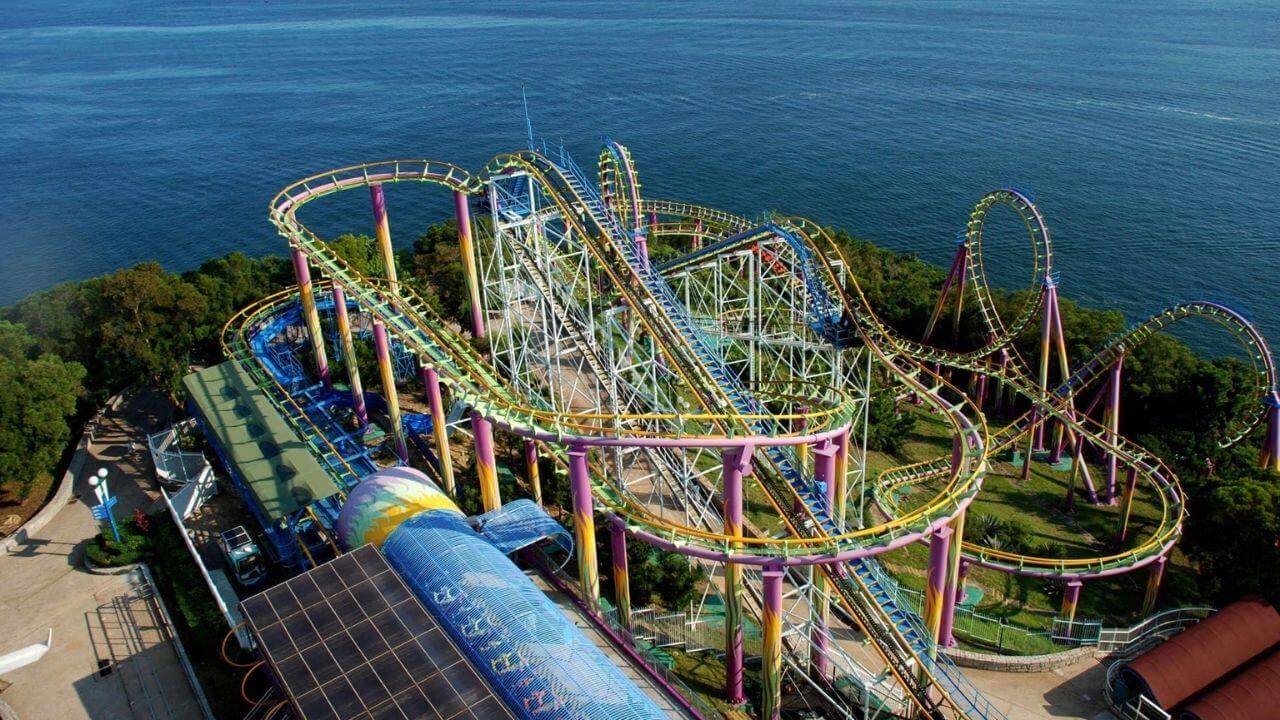
What to Expect
- Family Fun: A wide range of attractions suitable for all ages, from young children to adults.
- Educational Experiences: Interactive exhibits and shows that highlight marine conservation and animal welfare.
- Beautiful Scenery: Stunning views of the South China Sea and Hong Kong’s southern coastline.
- Crowds: Being a popular destination, expect large crowds, especially on weekends and holidays.
Tips for Visiting
Plan Your Visit: Check the park map and schedule in advance to prioritize your favorite attractions and shows.
Arrive Early: Get there early to avoid long lines and make the most of your day.
Buy Tickets in Advance: Purchase tickets online to save time and take advantage of any available discounts.
Comfortable Clothing: Wear comfortable clothing and shoes, and bring sunscreen and hats for sun protection.
Stay Hydrated and Snack: Bring water and snacks, or take advantage of the park’s numerous dining options.
Use Transportation: Make use of the park’s cable car and Ocean Express funicular railway to move between the Waterfront and Summit areas efficiently.
Man Mo Temple
Man Mo Temple is one of Hong Kong’s oldest and most revered temples, dedicated to the gods of literature (Man) and war (Mo). Located in the bustling Sheung Wan district on Hollywood Road, the temple is a serene oasis amidst the city’s busy streets. Built in 1847 during the Qing Dynasty, it serves as a place of worship for students seeking success in their studies and those wishing for prosperity and protection.
Construction Year: 1847
Location: 124-126 Hollywood Road, Sheung Wan, Hong Kong
Dedicated To: Man Tai (God of Literature) and Mo Tai (God of War)
Architectural Style: Traditional Chinese, featuring intricate wood carvings, incense coils, and ceramic figurines
Cultural Significance: Declared a Grade I historic building and a declared monument in Hong Kong
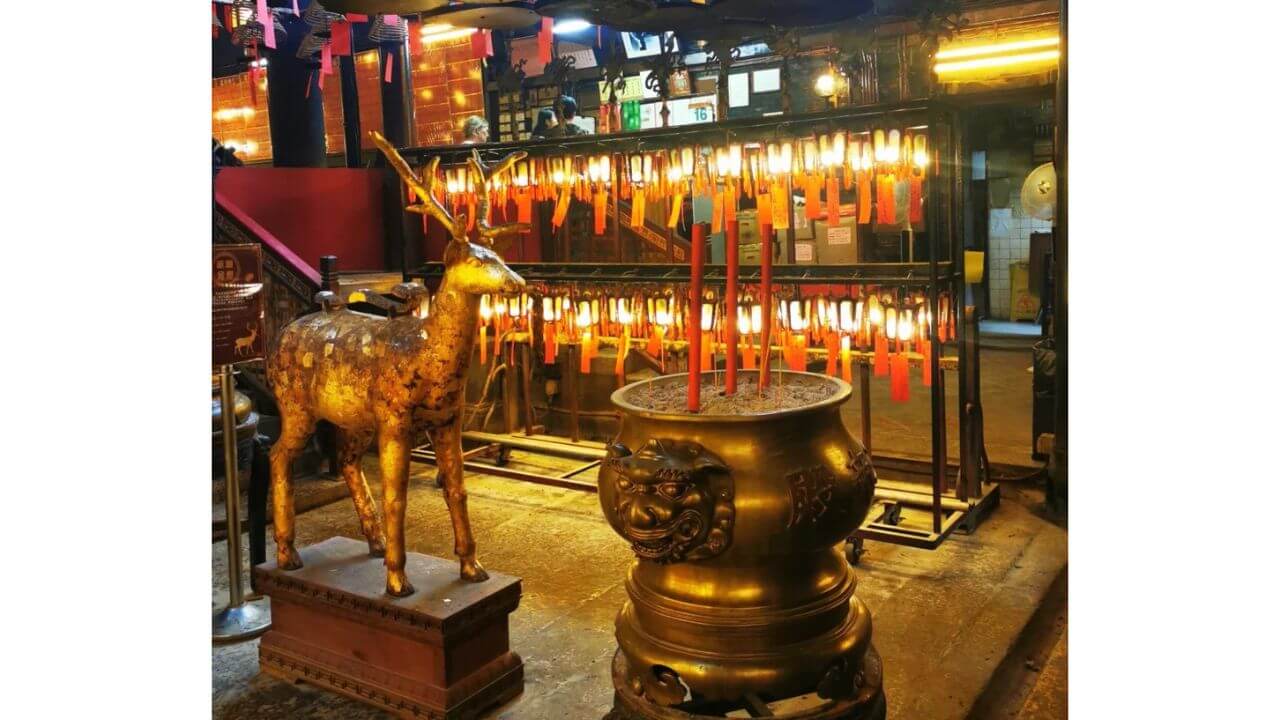
What to See
Main Hall: The primary worship area, featuring statues of Man Tai and Mo Tai, along with intricate wood carvings and ceramic figurines.
Incense Coils: Large, spiraling incense coils hanging from the ceiling, filling the temple with a fragrant smoke and creating a mystical atmosphere.
Offerings and Altars: Numerous altars adorned with offerings of fruit, flowers, and incense, showing the devotion of the worshippers.
Historic Artifacts: Ancient artifacts, including bronze bells and wooden sedan chairs used in traditional rituals and processions.
Adjacent Buildings: The complex also includes Lit Shing Temple, dedicated to all heavenly gods, and Kung So, a meeting place for local Chinese communities in the past.
What to Expect
- Peaceful Atmosphere: Despite its central location, the temple offers a tranquil retreat with a deeply spiritual ambiance.
- Cultural Experience: A glimpse into traditional Chinese religious practices and the rich history of Hong Kong.
- Photographic Opportunities: The beautiful architecture, incense coils, and vibrant altars provide excellent photography subjects.
- Local Worshippers: Witness local devotees praying, making offerings, and seeking blessings.
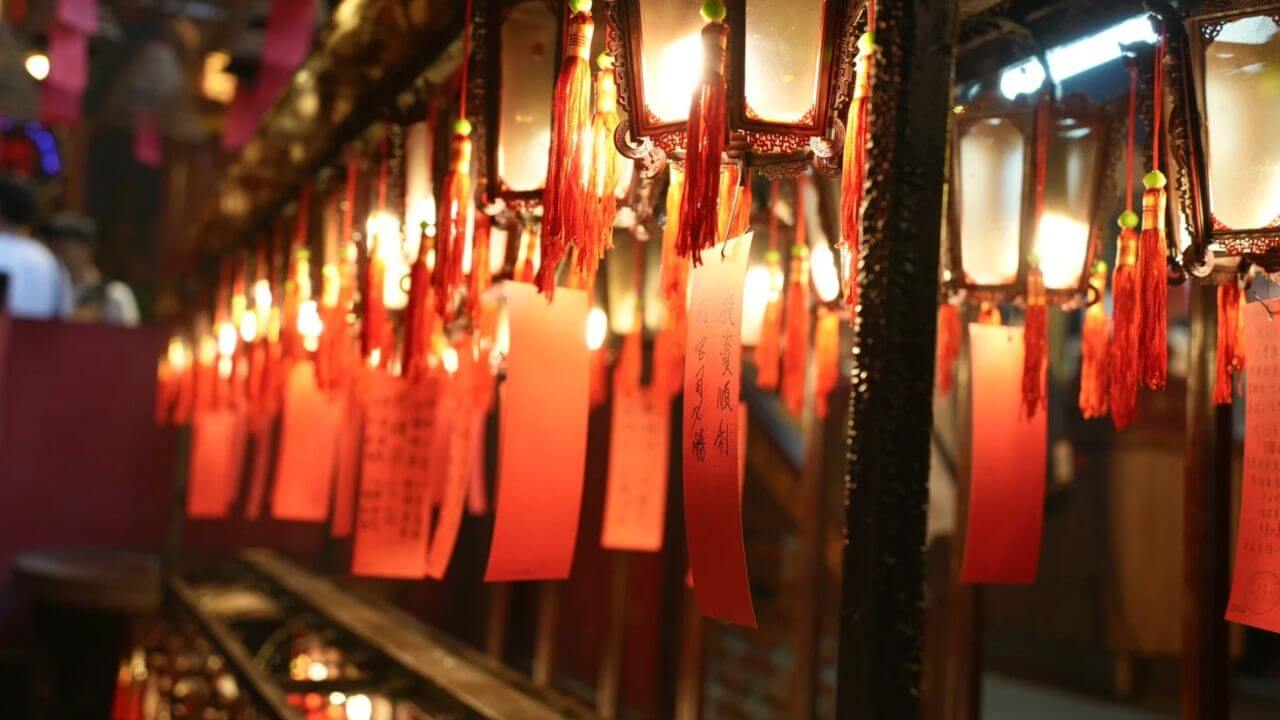
Tips
Respectful Behavior: Maintain a respectful demeanor, as it is an active place of worship.
Quiet Observation: Observe quietly, especially when worshippers are praying or performing rituals.
No Flash Photography: Photography is usually allowed, but avoid using flash to respect the worshippers and preserve the temple’s ambiance.
Dress Appropriately: Wear modest clothing as a sign of respect for the religious setting.
Explore Nearby: Combine your visit with a stroll around Hollywood Road, known for its antique shops and art galleries.
Chi Lin Nunnery and Nan Lian Garden
Chi Lin Nunnery and Nan Lian Garden are two interconnected sites located in the Diamond Hill area of Kowloon, Hong Kong. The Chi Lin Nunnery is a large Buddhist temple complex, while the adjacent Nan Lian Garden is a public park designed in the Tang Dynasty style. Together, they offer a serene and beautiful escape from the hustle and bustle of the city, embodying traditional Chinese culture and architecture.
Facts about Chi Lin Nunnery and Nan Lian Garden
Chi Lin Nunnery
- Founded: 1934, rebuilt in 1990
- Architecture: Tang Dynasty style, constructed entirely of wood without nails using traditional techniques
- Function: Buddhist nunnery, place of worship, and cultural heritage site
- Features: Main hall with statues of Buddha and Bodhisattvas, lotus ponds, and bonsai gardens
Nan Lian Garden
- Opened: 2006
- Size: Approximately 3.5 hectares
- Design: Tang Dynasty style, meticulously landscaped with rocks, water features, wooden structures, and pavilions
- Features: Pavilion of Absolute Perfection, Blue Pond, rockeries, and tea house
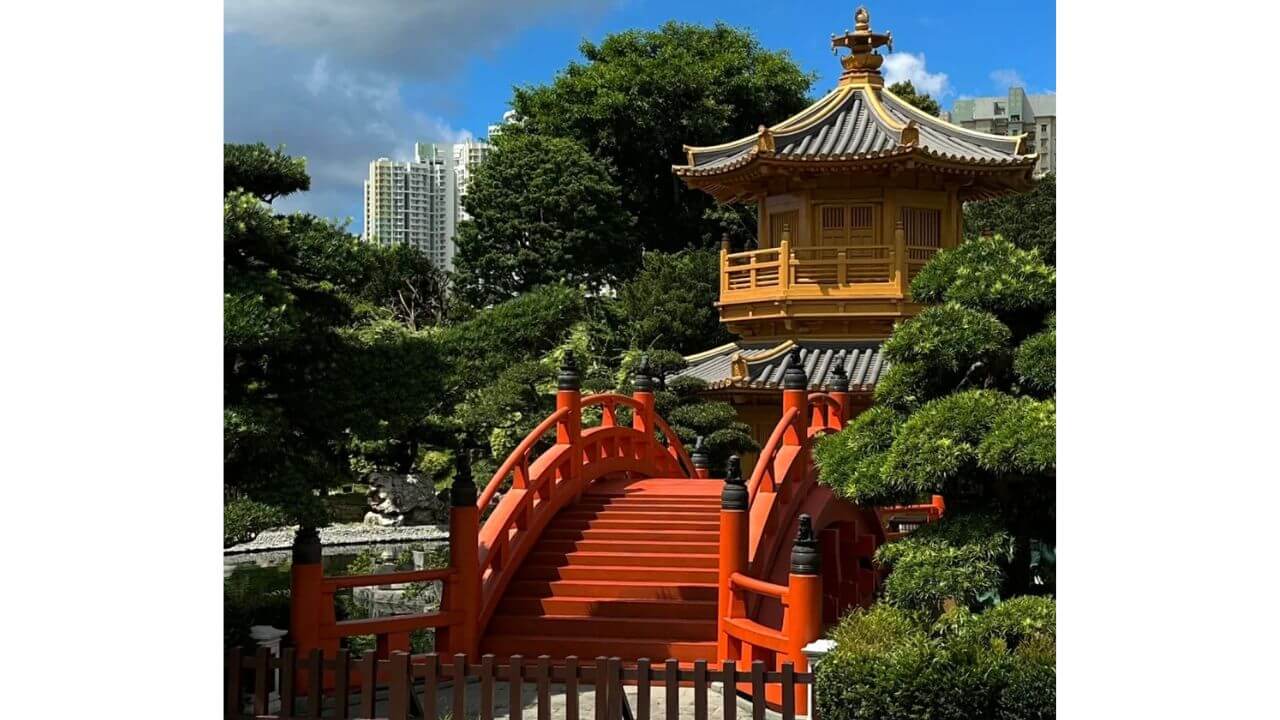
What to See
Chi Lin Nunnery
- Main Hall: Houses statues of Sakyamuni Buddha, Guanyin (the Goddess of Mercy), and other deities
- Lotus Ponds: Tranquil ponds filled with lotus flowers, adding to the serene atmosphere
- Bonsai Garden: Displays of meticulously pruned bonsai trees and traditional Chinese landscaping
- Temple Structures: Intricate wooden architecture showcasing traditional Tang Dynasty construction methods
Nan Lian Garden
- Pavilion of Absolute Perfection: A golden pavilion surrounded by a pond, connected by elegant red bridges
- Blue Pond: A large pond featuring koi fish and lush greenery
- Rockery: Carefully arranged rocks representing mountains and natural landscapes
- Wooden Structures: Traditional pavilions and bridges enhancing the garden’s aesthetic
- Tea House: A place to relax and enjoy traditional Chinese tea
What to Expect
- Peaceful Atmosphere: Both sites offer a tranquil and meditative environment, perfect for relaxation and reflection.
- Cultural Immersion: A deep dive into traditional Chinese culture, architecture, and landscaping.
- Educational Experience: Learn about Buddhist practices, Tang Dynasty design, and Chinese horticulture.
- Photographic Opportunities: Stunning views of traditional architecture, beautiful gardens, and serene ponds.
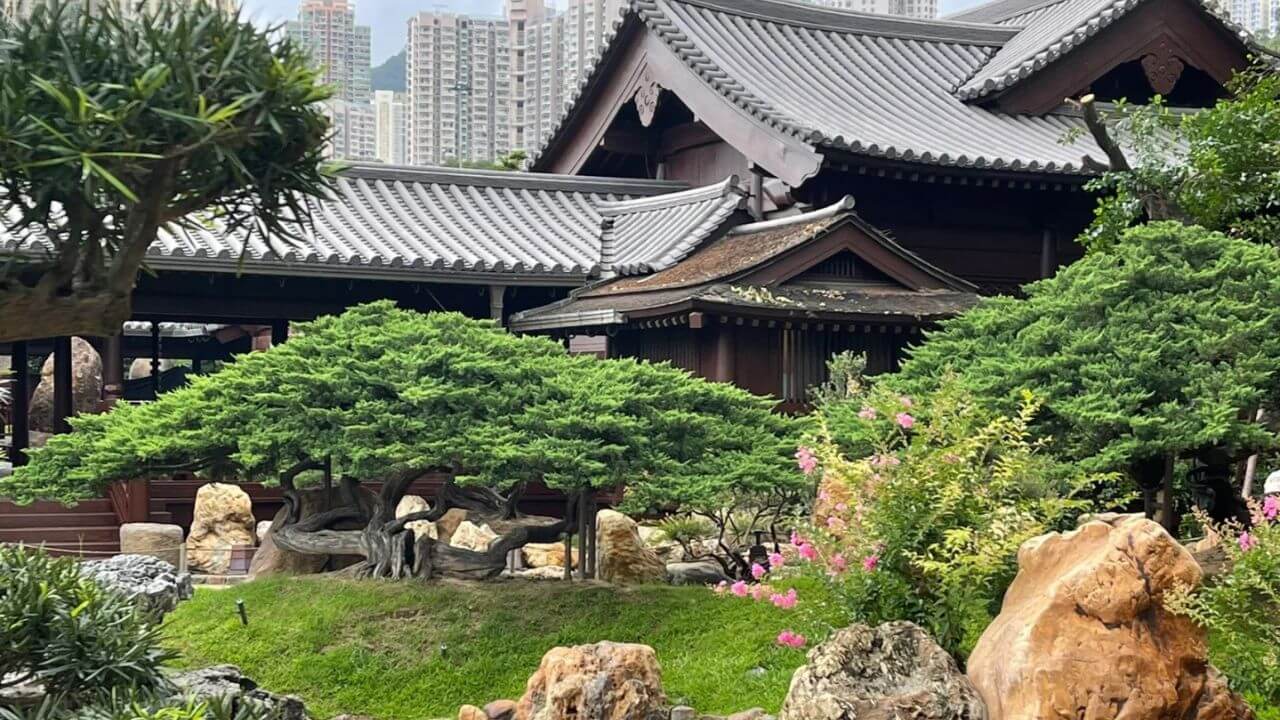
Tips for Visiting
Respectful Behavior: Maintain a quiet and respectful demeanor, especially in the nunnery, which is an active place of worship.
No Photography Restrictions: Photography is allowed, but avoid using flash inside the temple halls.
Comfortable Footwear: Wear comfortable shoes for walking around the large complex and garden.
Visit in the Morning: Arrive early to enjoy the peaceful atmosphere with fewer crowds.
Free Admission: Both the nunnery and garden are free to enter, making it an accessible cultural experience for all visitors.
Tea House Experience: Take some time to visit the tea house in Nan Lian Garden for a traditional tea experience.

Helen Wang
Travel Advisor & Guide Expert
I started my travel career in 2005 and have since become an expert in Tibet and China’s travel destinations and helping travelers plan unforgettable trips.
For expert travel advice to China or Tibet, feel free to contact me.